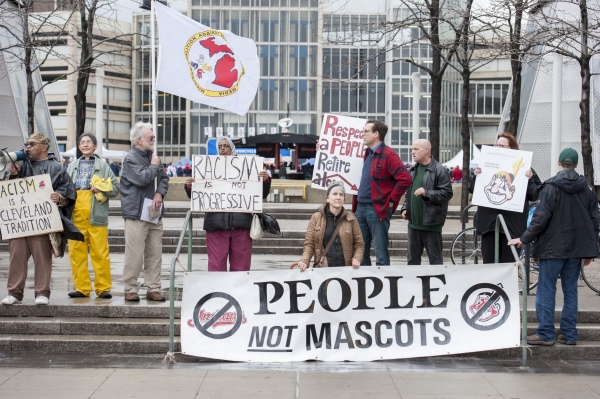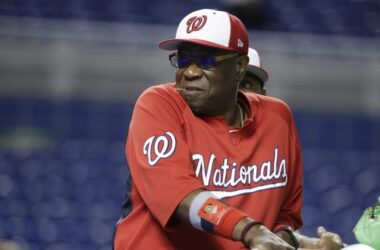I love baseball. In late February every year, stale, heavy winter air is punctured by the clap of a baseball burning into the back of a leather glove. It’s my favourite sound.
I grew up in Central Ohio and—like many of my childhood friends and neighbours—I am a passionate Ohio sports fan. Most of all, I love the Cleveland Indians. For those who aren’t familiar, they’re the MLB team with the terribly offensive logo—a buck-toothed, red-faced, feather-wearing caricature—to accompany an already offensive name. Naturally, this logo causes controversy. The sides to the debate are predictable: Outsiders demand the logo be changed since it’s remarkably insensitive to the long history of discrimination against Native American peoples, while fans defend it as an iconic symbol that has no bad intentions—the logo has been associated with their beloved team since 1901. Not many people are members of both parties; I am.
As a child, I didn’t understand why the logo was so offensive. In fact, I loved the team for it: One of my ancestors was a Native American from the Illinois Territory. I do not remember exactly when I heard the word racist associated with the team, but I was shocked. Years after this revelation, however, it’s clear to me how hurtful the depiction is to so many people. I maintain, however, that I don’t necessarily pick one side—I can empathize with both. Fan bases form for teams, not branding, so changing the logo to something more appropriate is not an attack on fans. It’s simply the righting of a long-standing wrong.
I am both a diehard fan who believes in the purity of the team, and someone who realizes that this century-old symbol undermines entire cultures. Still, no matter how I approach such a polarized issue, I am left out in the cold and pressured to choose one party or the other. I can’t comfortably set myself alongside other devoted fans who wish to retain the logo, but I don’t completely agree with the opposition’s tactics either. The fundamental problem is that there is so little common ground in a debate where I understand both sides.
This should not be a debate of two sides; rather, fans and opponents should be working together to find the best alternative. There is only one ultimate solution: Changing the logo and the corresponding name. I maintain that devoted Indians fans are, at heart, like me: They are fans of Cleveland the city and therefore the team, not the team and therefore the city. While the logo is the single image that represents the team, it is not the foundation of the city, nor our fandom—it is merely an expression of it. This means it can change with time.
Being a lightning rod for controversy is not best for the team nor the city of Cleveland. In straddling the divide, I try to get opposers to understand that life-long fans will not give up so easily, and hurling insults is no way to their heart. Instead, Cleveland supporters must help their fellow fans face the reality that a name and logo cooked up in 1901 really should not have any bearing on who we are today.
As long as we root for the team from Cleveland, it doesn’t ultimately matter what their name is. People who root for a team embroiled in controversy over an offensive logo do it primarily because they love their home. In trying to politely convince them of what is right, it is important to remember that even if they agree, accepting a change in logo may still be hard. It is essential to have a conversation—not a dispute—in order to enact positive change.









